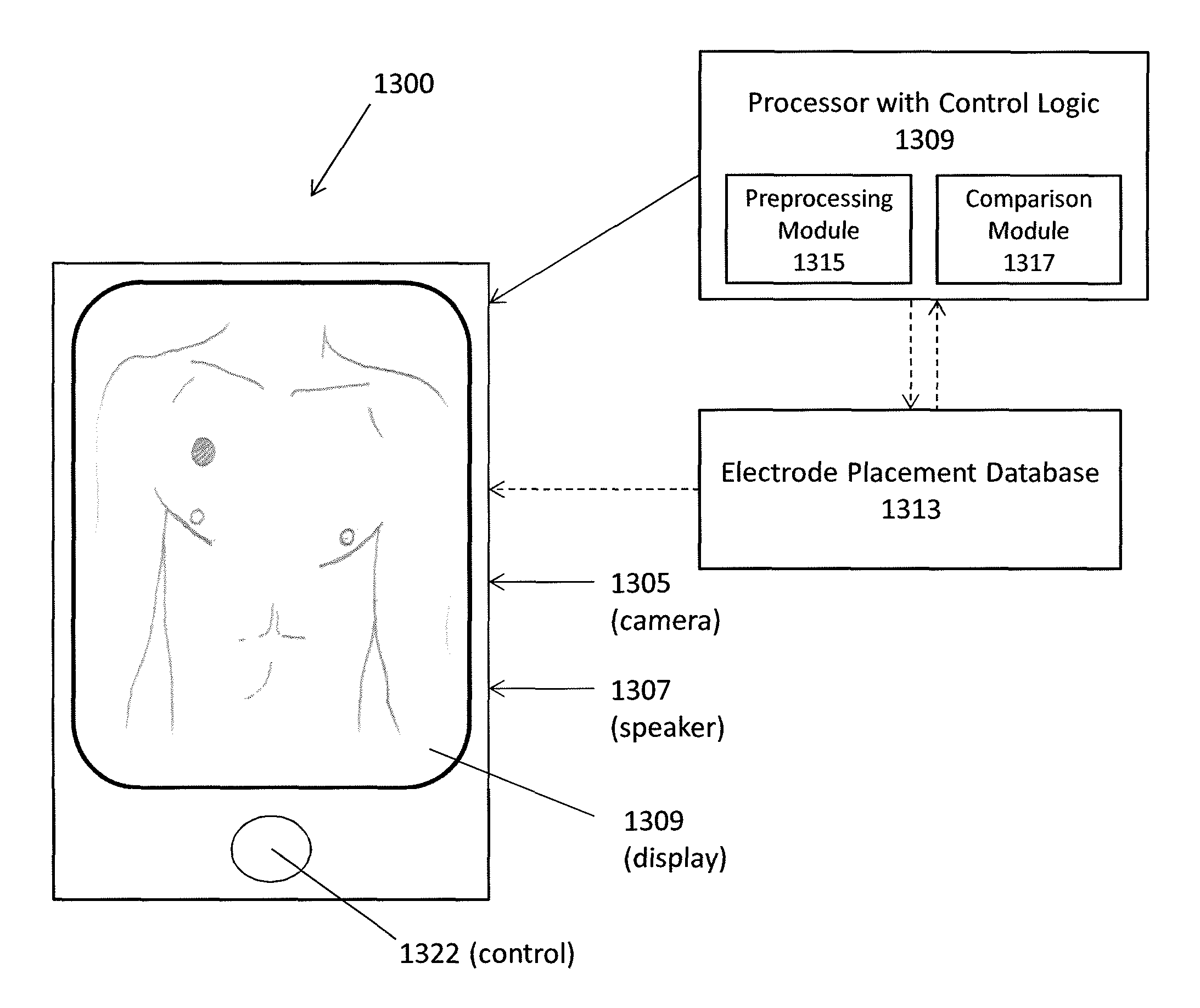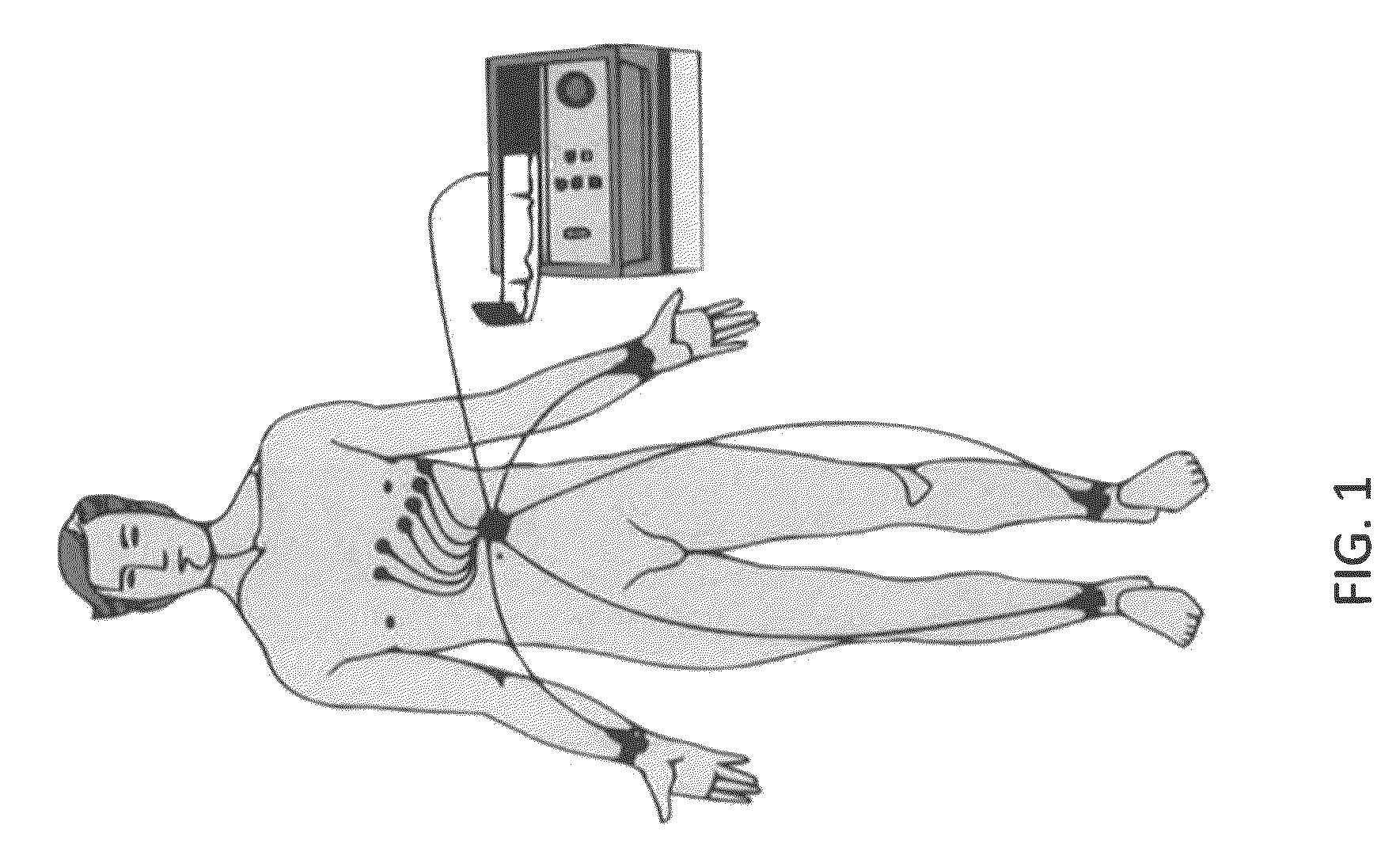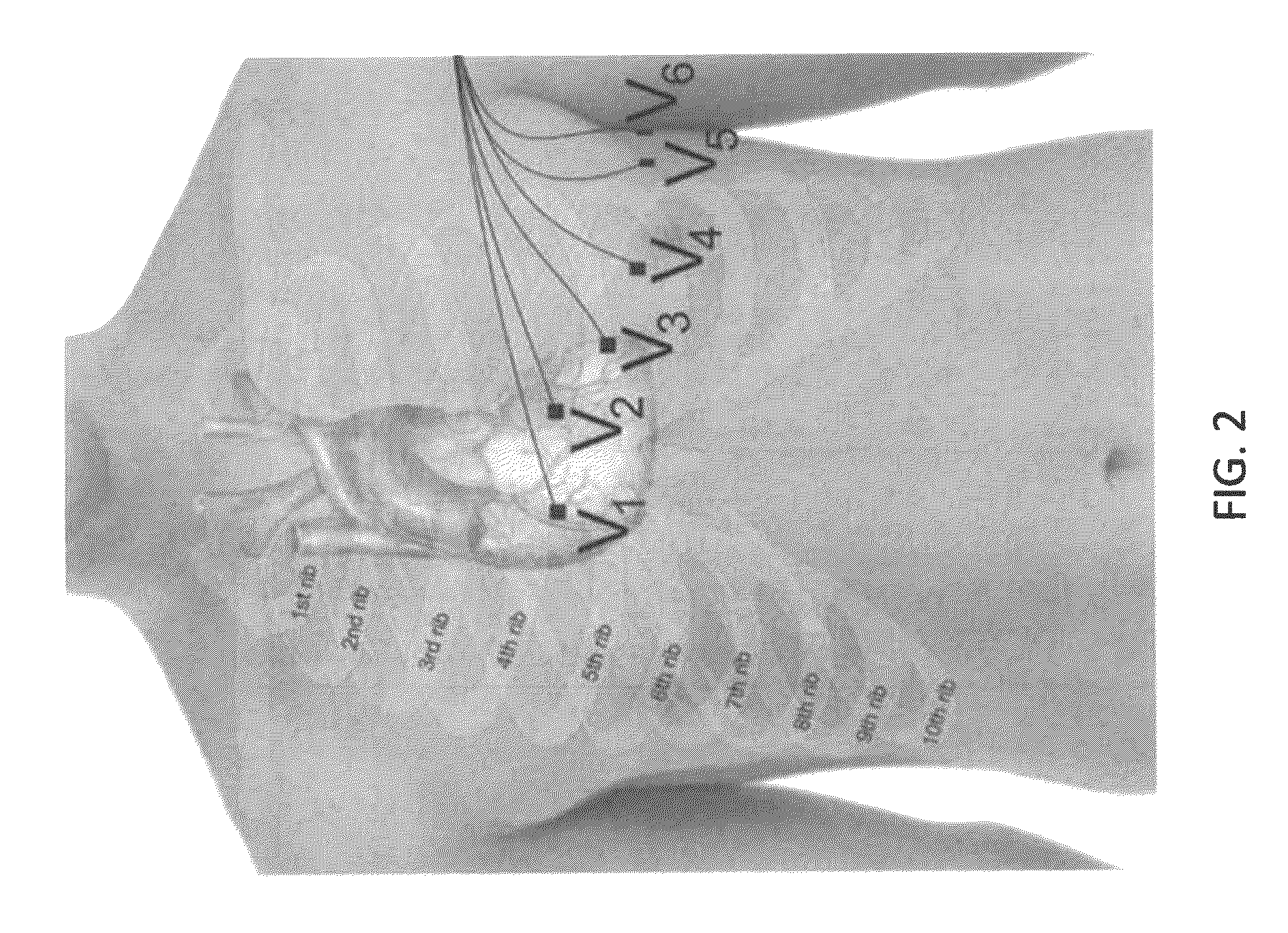Methods and systems for electrode placement
a technology of electrode placement and electrode placement, applied in the field of methods and systems for electrode placement, can solve the problems of difficult comparison of ecg results to standard ecg data, incorrect placement of electrodes on patients, adverse effects on ecg,
- Summary
- Abstract
- Description
- Claims
- Application Information
AI Technical Summary
Benefits of technology
Problems solved by technology
Method used
Image
Examples
example 1
[0104]FIG. 12 is a flowchart of one exemplary method 90 for determining the placement of electrodes on a patient. A picture of a patient including a sizing marker is received 92. The picture of the patient is normalized using the sizing marker to produce a normalized picture of the patient 94. The normalized picture of the patient is compared to a database comprising representations of a plurality of body types and predetermined electrode placement positions for each body type to determine positioning of electrodes on the patient 96. An image of the patient is then presented showing positioning of electrodes on the image of the patient 98.
[0105]The image can be presented on a handheld computer device such as a smartphone or tablet computer. The user or patient can place the electrodes based on the presented image. The electrodes can then be used to take an ECG.
example 2
[0106]A smartphone can be used by an emergency medical technician (EMT) to take a picture of the chest of a patient. The picture of the patient can be selected by the EMT for use with the smartphone application. The smartphone application can then present an image of the patient showing the electrode placement on the image of the patient to the EMT. The EMT can then place electrodes on the body of the patient using the image of the patient showing the electrode placement. After placement of the electrodes the patient is ready to have an ECG taken. The ECG can be taken by the EMT or taken later.
example 3
[0107]A smartphone or tablet computer can be used by a doctor or nurse in a medical office to take a picture of the patient. The picture of the patient can be selected by the doctor or nurse for use with the smartphone or tablet computer application. The smartphone or tablet computer application can then present an image of the patient showing the electrode placement on the image of the patient to the doctor or nurse. The doctor or nurse can place electrodes on the body of the patient using the image of the patient showing the electrode placement. After placement of the electrodes the patient is ready to have an ECG taken.
PUM
 Login to View More
Login to View More Abstract
Description
Claims
Application Information
 Login to View More
Login to View More - R&D
- Intellectual Property
- Life Sciences
- Materials
- Tech Scout
- Unparalleled Data Quality
- Higher Quality Content
- 60% Fewer Hallucinations
Browse by: Latest US Patents, China's latest patents, Technical Efficacy Thesaurus, Application Domain, Technology Topic, Popular Technical Reports.
© 2025 PatSnap. All rights reserved.Legal|Privacy policy|Modern Slavery Act Transparency Statement|Sitemap|About US| Contact US: help@patsnap.com



